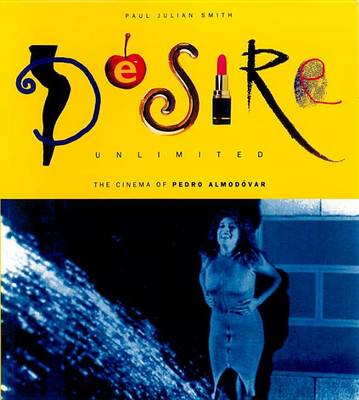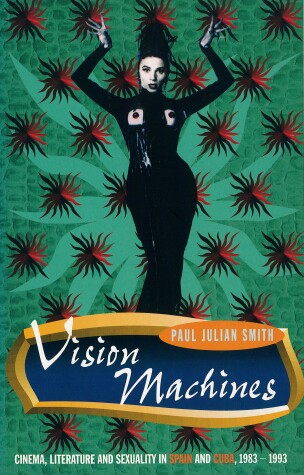Critical Studies in Latin American Culture
2 total works
This text examines the work of Pedro Almodovar, the Spanish director whose nine features to date include the comedy, Women on the Verge of a Nervous Breakdown (1988), the S & M melodrama, Tie me up! Tie me down! (1990) and the family romance, High Heels (1991). This study argues not only that Almodovar is a highly skilled manipulator of cinematic form, but also that his films raise important questions-of gender, nationality and sexuality-which demand a serious response from their audience. Desire Unlimited offers analyses derived from recent feminist, gay and postmodern theory.
Over the last decade, visibility and sexuality have become a major theme in Spanish and Cuban cinema, literature and art. Vision Machines explores this development in the light of contemporary history and recent theoretical accounts of sight by writers including Paul Virilio, Gianni Vattimo and Teresa de Lauretis.
The very visible women of Almodóvar's cinema are Paul Julian Smith's first subject. He shows how, in his early Dark Habits, lesbianizes the look, putting women's pleasure at the centre of the frame, and then examines Almodóvar's recent film, Kika, where the conflict between cinema and video is played out in the bodies of women: good, bad and ugly. Moving the focus to Cuba, Smith discussed the reception in Europe and North America of Nestor Almendro's remarkable documentary on gays in Cuba, Improper Conduct, and traces the trial of visibility to which effeminate men were exposed. He compares Almendro's work with the autobiography of exile novelist Reinaldo Arenas, which revels in graphic sex, and also looks at the first Cuban film with a gay theme, Gutierrez Alea's Strawberry and Chocolate.
Smith returns to Spain to consider the response of artists and intellectuals to the public invisibility of AIDS in a country with one of the highest rates of HIV transmission in the European Union. Drawing on Anglo-American debates on the representation of AIDS, he concentrates on the one major intervention by Spanish scholars and artists, Love and Rage, and on the only figure in any medium to address AIDS in his aesthetic practice, the conceptual artist and video-maker Pepe Espaliu. He concludes with a fascinating account of Julio Medem's pathbreaking film from 1993, The Red Squirrel, which has opened up a new approach to two formerly taboo subjects: Basque nationalism and female sexuality.
The very visible women of Almodóvar's cinema are Paul Julian Smith's first subject. He shows how, in his early Dark Habits, lesbianizes the look, putting women's pleasure at the centre of the frame, and then examines Almodóvar's recent film, Kika, where the conflict between cinema and video is played out in the bodies of women: good, bad and ugly. Moving the focus to Cuba, Smith discussed the reception in Europe and North America of Nestor Almendro's remarkable documentary on gays in Cuba, Improper Conduct, and traces the trial of visibility to which effeminate men were exposed. He compares Almendro's work with the autobiography of exile novelist Reinaldo Arenas, which revels in graphic sex, and also looks at the first Cuban film with a gay theme, Gutierrez Alea's Strawberry and Chocolate.
Smith returns to Spain to consider the response of artists and intellectuals to the public invisibility of AIDS in a country with one of the highest rates of HIV transmission in the European Union. Drawing on Anglo-American debates on the representation of AIDS, he concentrates on the one major intervention by Spanish scholars and artists, Love and Rage, and on the only figure in any medium to address AIDS in his aesthetic practice, the conceptual artist and video-maker Pepe Espaliu. He concludes with a fascinating account of Julio Medem's pathbreaking film from 1993, The Red Squirrel, which has opened up a new approach to two formerly taboo subjects: Basque nationalism and female sexuality.

